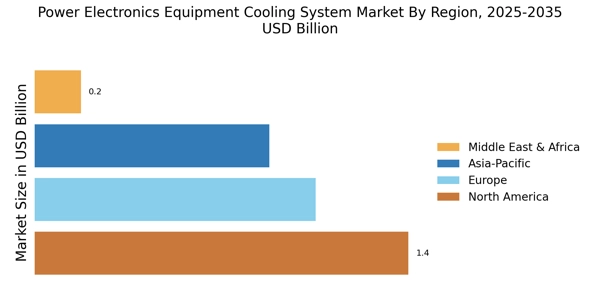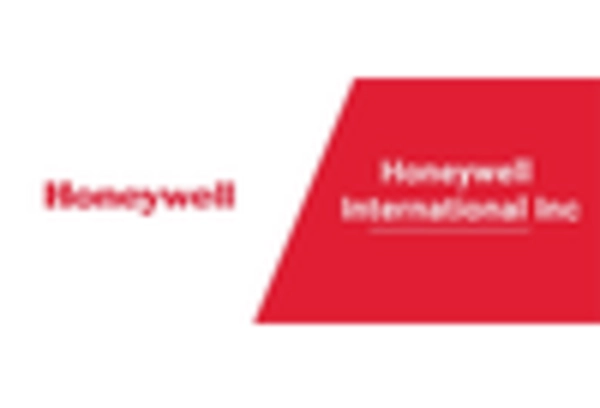Growth of Renewable Energy Sector
The expansion of the renewable energy sector plays a pivotal role in shaping the Power Electronics Equipment Cooling System Market. As the adoption of solar and wind energy technologies increases, the need for efficient power electronics systems becomes critical. These systems require effective cooling solutions to maintain operational efficiency and reliability. The integration of power electronics in renewable energy applications, such as inverters and converters, necessitates advanced cooling technologies to manage heat dissipation. This trend is expected to drive market growth, with estimates suggesting a potential increase in demand for cooling systems by approximately 8% as renewable energy projects proliferate. Consequently, manufacturers are likely to focus on developing specialized cooling solutions tailored for renewable energy applications.
Regulatory Standards and Compliance
The establishment of stringent regulatory standards regarding energy efficiency and emissions is a key driver for the Power Electronics Equipment Cooling System Market. Governments and regulatory bodies are increasingly mandating compliance with energy efficiency standards, compelling manufacturers to adopt advanced cooling technologies. This regulatory landscape encourages the development of cooling systems that not only meet performance criteria but also contribute to reduced environmental impact. As a result, companies are investing in research and development to create compliant cooling solutions, which is likely to enhance market growth. The market could witness an increase in demand for compliant cooling systems, potentially leading to a market expansion of around 5% over the next few years.
Rising Demand for Power Electronics Equipment
The increasing demand for power electronics equipment across various sectors, including automotive, telecommunications, and industrial applications, drives the Power Electronics Equipment Cooling System Market. As industries adopt advanced technologies, the need for efficient cooling systems becomes paramount to ensure optimal performance and longevity of electronic components. For instance, the automotive sector is witnessing a surge in electric vehicle production, which necessitates robust cooling solutions to manage heat generated by power electronics. This trend is expected to propel the market, with projections indicating a compound annual growth rate of over 7% in the coming years. Consequently, manufacturers are compelled to innovate and enhance their cooling systems to meet the evolving requirements of power electronics equipment.
Technological Innovations in Cooling Solutions
Technological advancements in cooling solutions significantly influence the Power Electronics Equipment Cooling System Market. Innovations such as liquid cooling, phase change materials, and advanced heat exchangers are emerging as effective methods to manage thermal challenges in power electronics. These technologies not only improve cooling efficiency but also reduce energy consumption, aligning with the growing emphasis on sustainability. For example, liquid cooling systems are gaining traction due to their superior heat dissipation capabilities, which are crucial for high-performance applications. The market is projected to expand as these innovative cooling solutions become more accessible and cost-effective, potentially leading to a market growth rate of approximately 6% annually.
Increased Focus on Data Centers and IT Infrastructure
The escalating demand for data centers and robust IT infrastructure significantly impacts the Power Electronics Equipment Cooling System Market. As digital transformation accelerates, data centers require efficient cooling systems to manage the heat generated by high-density electronic components. The proliferation of cloud computing and big data analytics further intensifies this need, as these technologies rely heavily on power electronics. Consequently, the market for cooling systems is projected to grow, with estimates indicating a potential increase of around 7% in demand driven by the need for reliable cooling solutions in data centers. This trend compels manufacturers to innovate and provide advanced cooling technologies that can effectively address the thermal management challenges faced by modern IT infrastructure.


















Leave a Comment